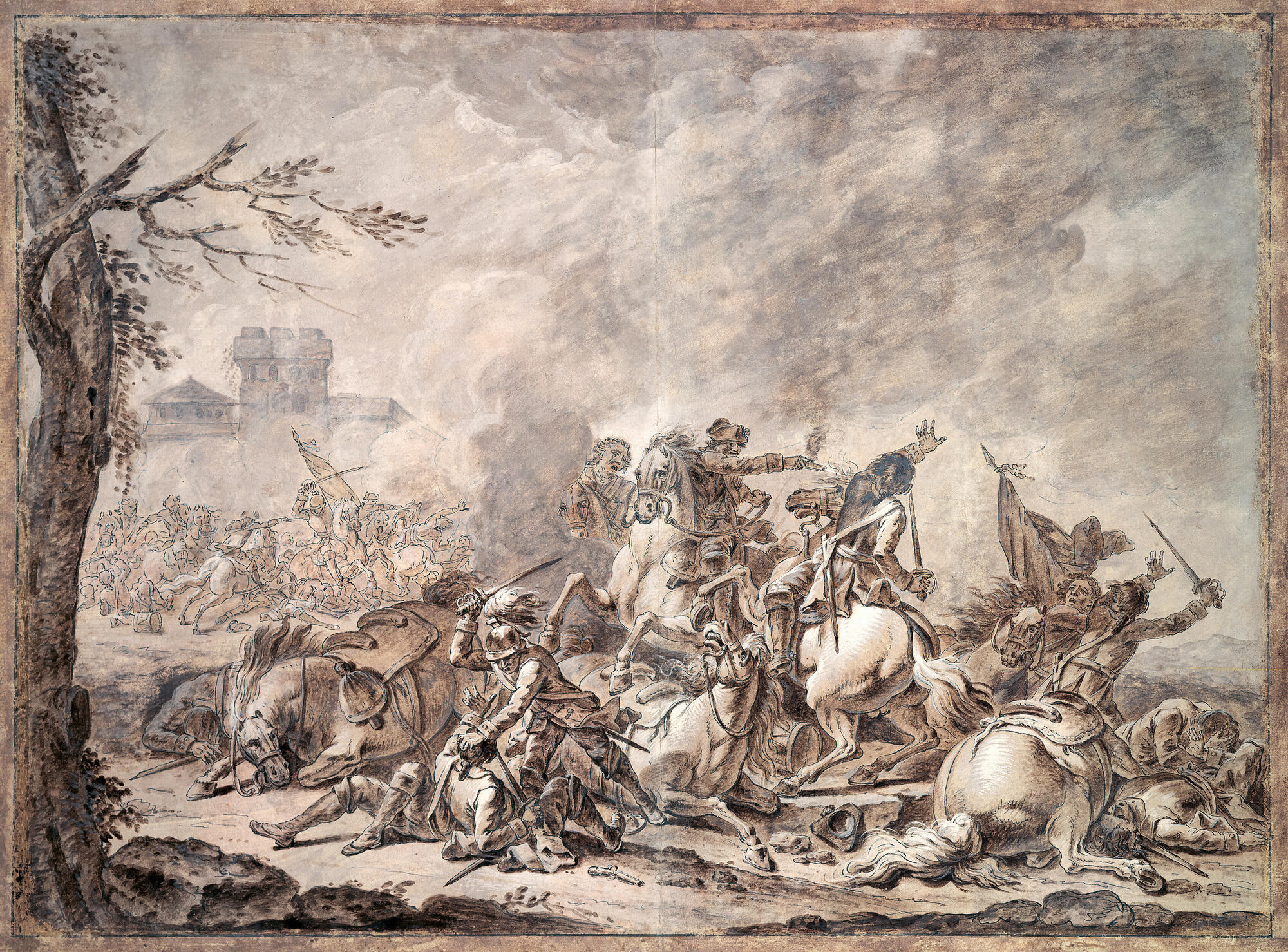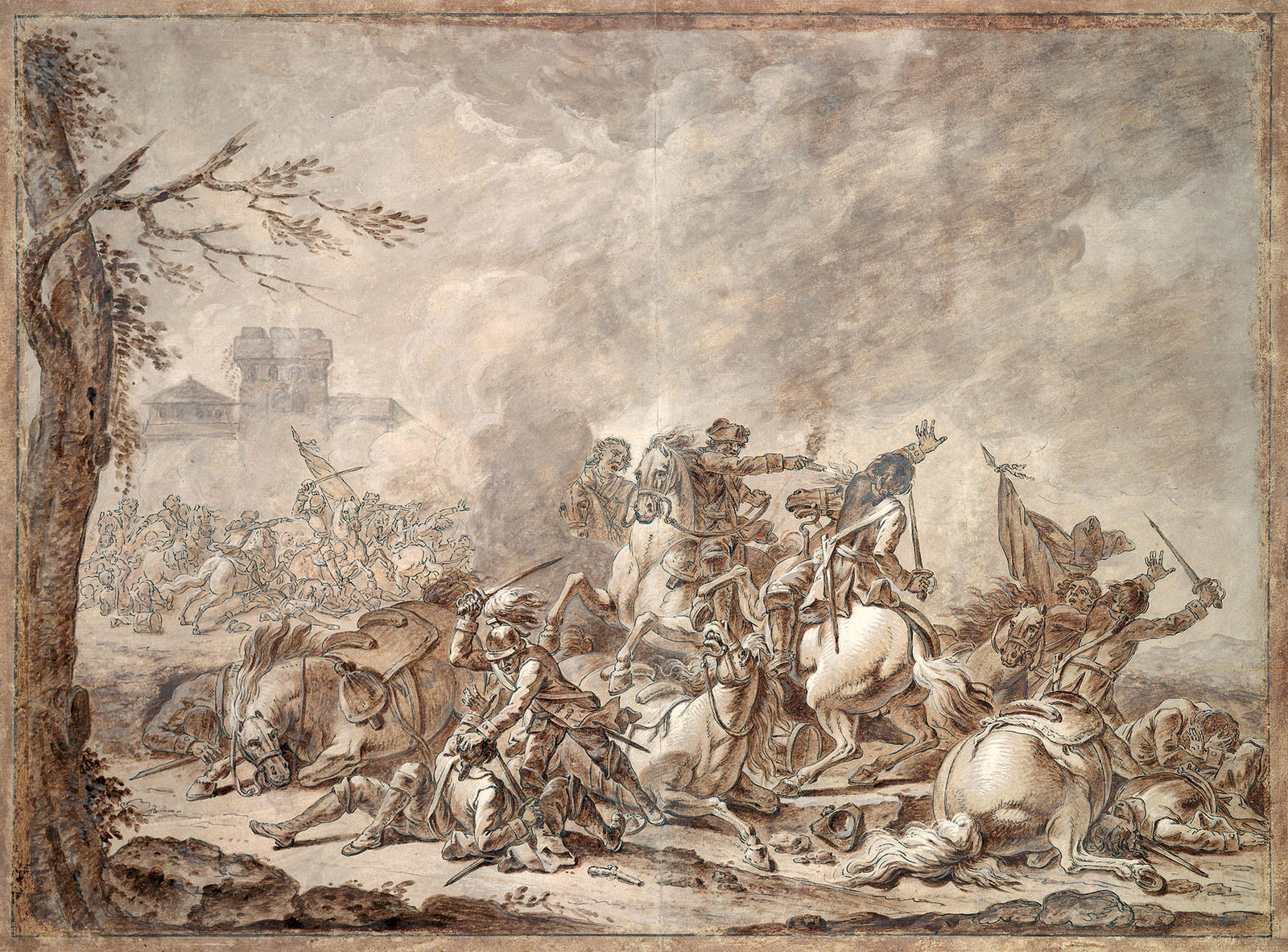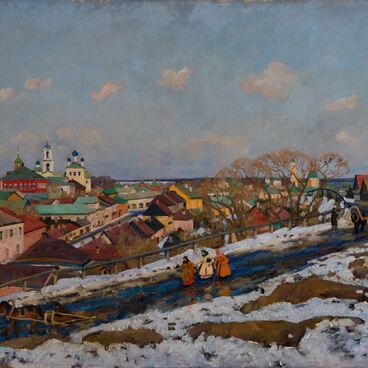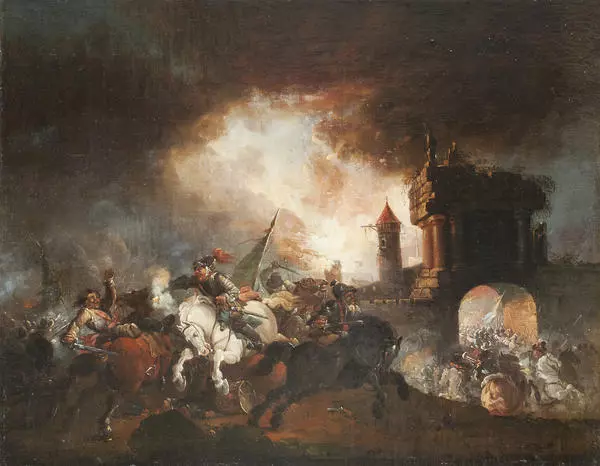Jacques Courtois was a prominent French painter, draughtsman and engraver of the Baroque era. The artist painted mainly battle scenes and gained great popularity in this genre all over Europe.
Jacques Courtois was born in France in the town of Saint-Hippolyte (in Burgundy) into the family of an artist and received his first painting lessons from his father. When Jacques turned 15, the whole family moved to Italy, where the Courtois brothers — Jacques, Jean-Francois and Guillaume — became intimately acquainted with Italian art and themselves became famous artists nicknamed Bourguignon — “the Burgundians”.
Jacques Courtois’ first major work, a fresco in the Basilica of the Holy Cross in Jerusalem (Basilica di Santa Croce in Gerusalemme) on the theme “The Feeding of the Five Thousand”, was commissioned by Abbot Hilarion of Milan. His first battle scenes are two drawings for illustrating the book of the Jesuit Famiano Strada “De Bello Belgico”.
The artist’s early paintings depicting military episodes are distinguished by bright colors and meticulous detail, however, battle scenes created in the 1650s demonstrate the evolution of Courtois’ style: his manner of painting became broader and more generalized and he opted for a refined color palette. His most famous works of the battle genre include four monumental compositions created for Mattias de’ Medici, which depict the real military events of 1641–1643, in which Medici took part, as well as two paintings commissioned by the Venetian ambassador Sagrado and battle scenes for the Palazzo Moroni.
Throughout his career, Jacques Courtois varied his color palette, but most of his works are characterized by a combination of blue, silver-gray, green, brown and yellow tones. The artist worked, according to contemporaries, quite quickly. His canvases, always impeccable in quality, justify his great reputation, which he had earned during his lifetime and which is reported by his biographers. The artist died in Rome on November 14, 1676.
The drawing came to the museum in 1919 from the estate of Baryatino, Tarussky district, Kaluga Governorate, as part of the private art collection of the princes Gorchakov.
Jacques Courtois was born in France in the town of Saint-Hippolyte (in Burgundy) into the family of an artist and received his first painting lessons from his father. When Jacques turned 15, the whole family moved to Italy, where the Courtois brothers — Jacques, Jean-Francois and Guillaume — became intimately acquainted with Italian art and themselves became famous artists nicknamed Bourguignon — “the Burgundians”.
Jacques Courtois’ first major work, a fresco in the Basilica of the Holy Cross in Jerusalem (Basilica di Santa Croce in Gerusalemme) on the theme “The Feeding of the Five Thousand”, was commissioned by Abbot Hilarion of Milan. His first battle scenes are two drawings for illustrating the book of the Jesuit Famiano Strada “De Bello Belgico”.
The artist’s early paintings depicting military episodes are distinguished by bright colors and meticulous detail, however, battle scenes created in the 1650s demonstrate the evolution of Courtois’ style: his manner of painting became broader and more generalized and he opted for a refined color palette. His most famous works of the battle genre include four monumental compositions created for Mattias de’ Medici, which depict the real military events of 1641–1643, in which Medici took part, as well as two paintings commissioned by the Venetian ambassador Sagrado and battle scenes for the Palazzo Moroni.
Throughout his career, Jacques Courtois varied his color palette, but most of his works are characterized by a combination of blue, silver-gray, green, brown and yellow tones. The artist worked, according to contemporaries, quite quickly. His canvases, always impeccable in quality, justify his great reputation, which he had earned during his lifetime and which is reported by his biographers. The artist died in Rome on November 14, 1676.
The drawing came to the museum in 1919 from the estate of Baryatino, Tarussky district, Kaluga Governorate, as part of the private art collection of the princes Gorchakov.





